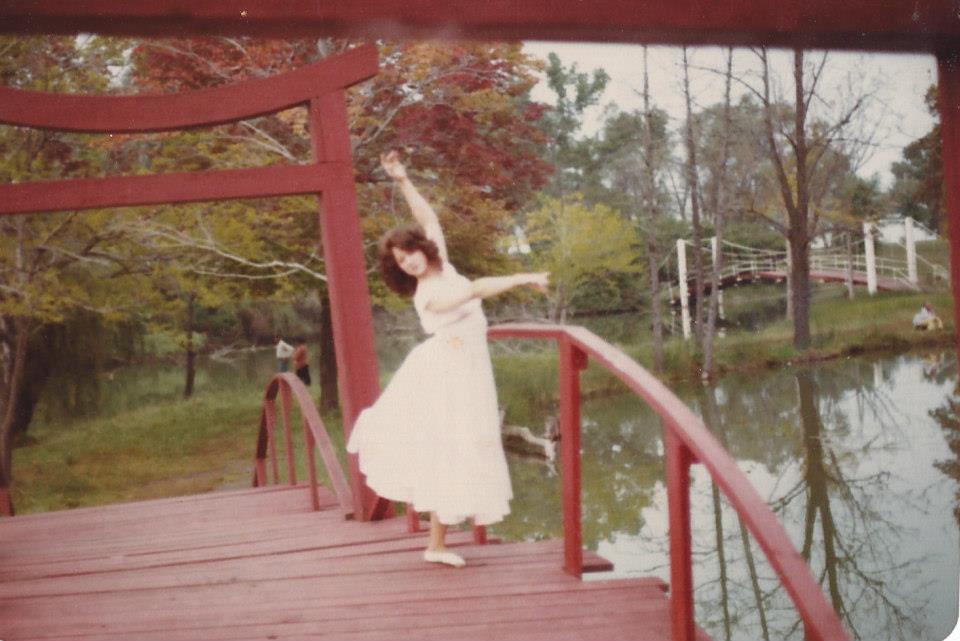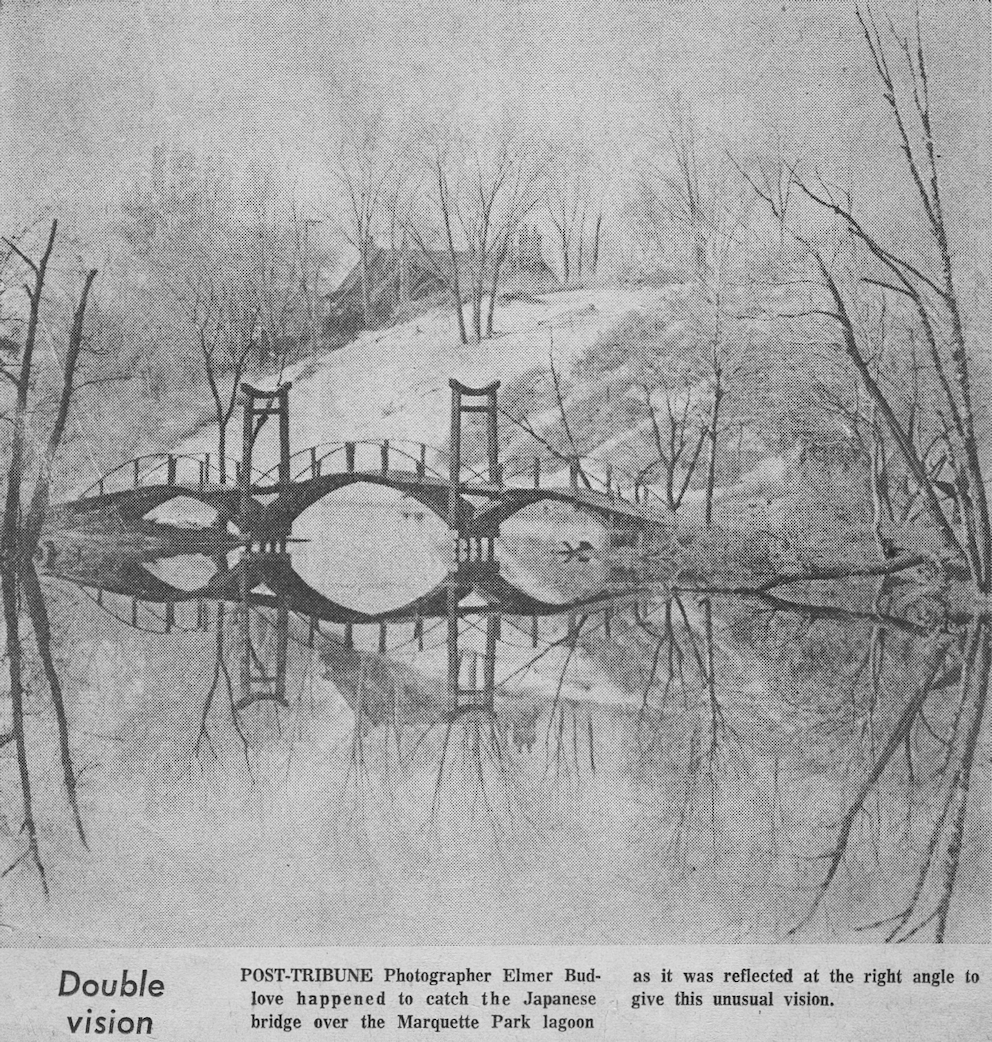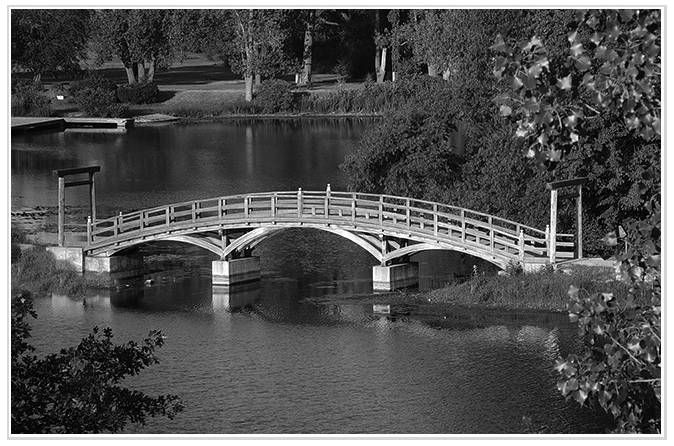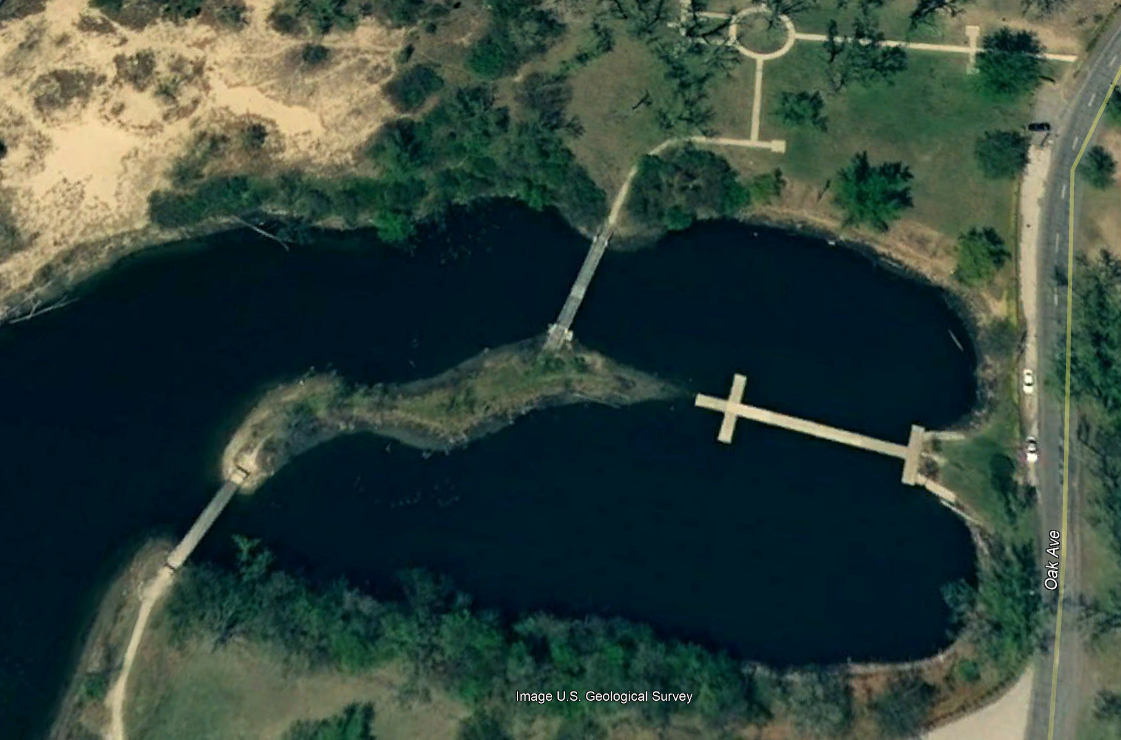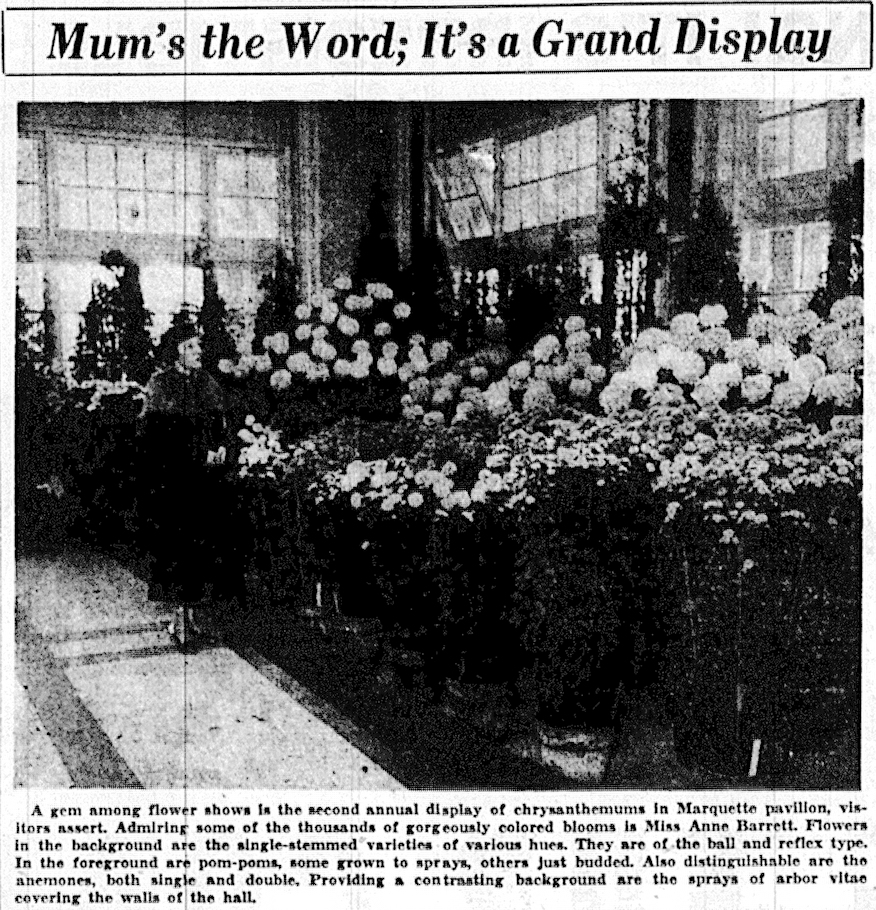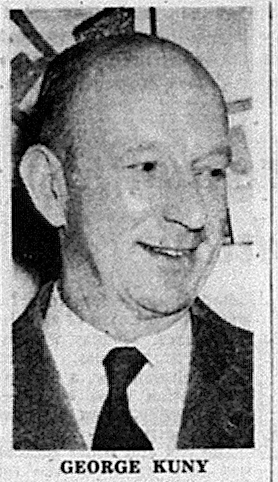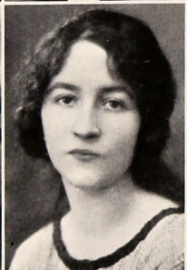Chrysanthemums and Bridges
Patterson Island in Marquette Park &
Its Bridges
The same year that Patterson Island in the Marquette Park lagoon was dedicated in 1935 there was a mammoth flower
show at the Pavilion.
The next year’s two-day show was visited by nearly 800 people and featured some of the 4,500 plants that
had been propagated by George Kuny in the Park Department’s greenhouses in Gleason park.
George Kuny was the original landscape architect of Patterson Island.
Patterson Island was named after one of Gary’s first real estate and insurance brokers, William Pius Patterson (1871-1941). Born on a farm in Daviess County, Indiana, he opened a real estate office in Gary in 1908, served on the Board of Works under Mayor Johnson and was appointed to the park board by Mayor Clayton in 1935. An influx of money to the park board from the New Deal’s Works Progress Administration (WPA) put nearly 1,000 people to work building North Gleason park and completing projects in other parks, including a Gun Club Clubhouse in Marquette Park, and Patterson Island.
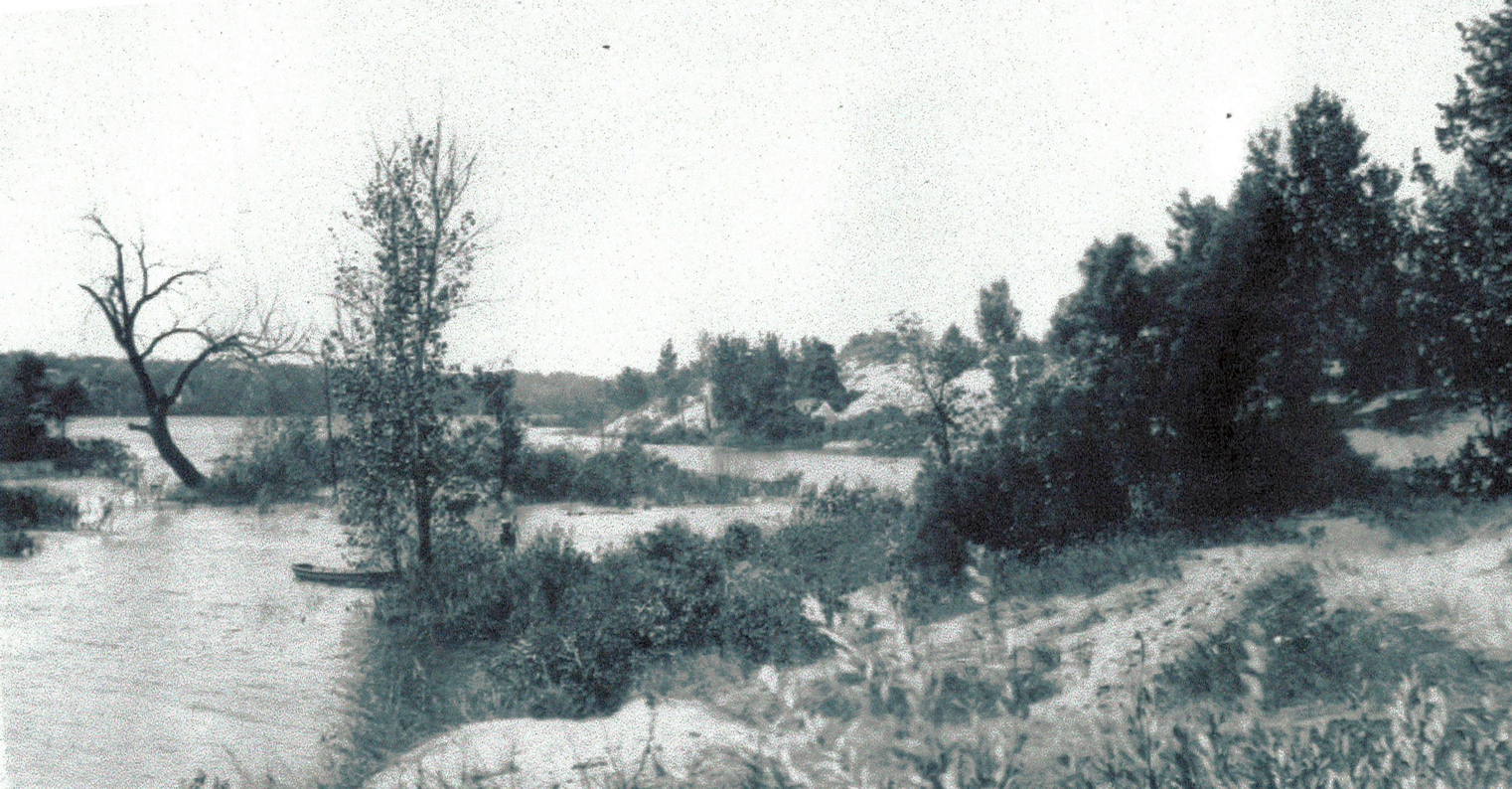
The island before Marquette Park (Footnote: Patterson Island before Marquette Park. Photo is from the collection of photos sent to me by Harry Jacknow for the Squeeze Inn story. The T.O.T.S. women had a shack, likely where the Aquatorium is today and took a number of pictures about 1920 before they were kicked off the land. This is my reason for dating this photo as before the Park was built. )
A Very Early Photo
This photo, which likely came from the Calumet Archives, was likely taken just following the building of the Pavilion - at the very left one can just see the overhang of that building. It was found with a card titled “Gary, Indiana. Marquette Park – A view of the casting platform in lagoon,” but unfortunately not dated. The casting pad that existed for many years would eventually come off the east side of the lagoon - that can be seen in the photo below from the 1950s that Oscar Boedeker took from an airplane, but the original concrete pad that came off the island can be seen in the aerial photo below that was taken before 1932. What is surprising is the detail of the original south and north bridges the photo provides, and it looks like there was another bridge in the middle – two islands? A Japanese “Torii Gate” is also visible at the south bridge. It differs significantly from the 1956 Post-Tribune photo below – something I can’t quite understand.
The Bridges of Patterson Island
Original south bridge
Two bridges, off the north and south ends of the island, were likely built when Marquette Park and the Pavilion were built in 1921-1925. The picture at the very top of this page, which shows no bridge, was likely taken about 1920 as it was with the photos that came with the Squeeze Inn archive of photos. The aerial photo below, taken before the statue was installed in 1932, shows two bridges as well as the "casting pad" that is off the island in the above picture. Another photo which shows a bit of detail has surfaced from Bud Jacknow’s collection of photos. Taken about 1944 or 1945, it shows the railing and arch. The bridge had collapsed by 1956 as the Post-Tribune photos show.
The second south bridge
Having collapsed by 1956, the island was evidently bridgeless for a number of years until Frank and Grace Stonehill, the owners of
Ishi Yama Apartments on Lake Street donated the lumber for members of the Marine Reserves to build a replacement in 1965.
Company A of the 6th Engineer Battalion, operating out of the Naval Reserve building, erected what has been described as
rather flimsy, home-made structure of an ornamental Japanese style.
The handrail was bent 2x4s and was erected as a War Memorial. (Footnote:
Greg Jenkins recollections and photo caption Vidette-Messenger
(Valparaiso, IN) June 3, 1966; 'Stonehill' ornamental bridge picture courtesy George Rogge; Stonehill's contribution of lumber per
email from George Rogge, March 3, 2020.
)
 Designed by Marine Captain Charles Ramsay it featured two fifteen-foot-tall “Torii” ornaments to pass under. (Footnote:
“Japanese bridge to be replaced.” Citizen Section, Gary Post-Tribune, Dec. 12, 1985.
)
Luckily, we have several pictures of the that bridge which had collapsed by 1985.
Designed by Marine Captain Charles Ramsay it featured two fifteen-foot-tall “Torii” ornaments to pass under. (Footnote:
“Japanese bridge to be replaced.” Citizen Section, Gary Post-Tribune, Dec. 12, 1985.
)
Luckily, we have several pictures of the that bridge which had collapsed by 1985.
Two new photos have emerged from the collection of Mike Moore, who knew Oscar Boedeker and saved some of his photos and memorabilia.
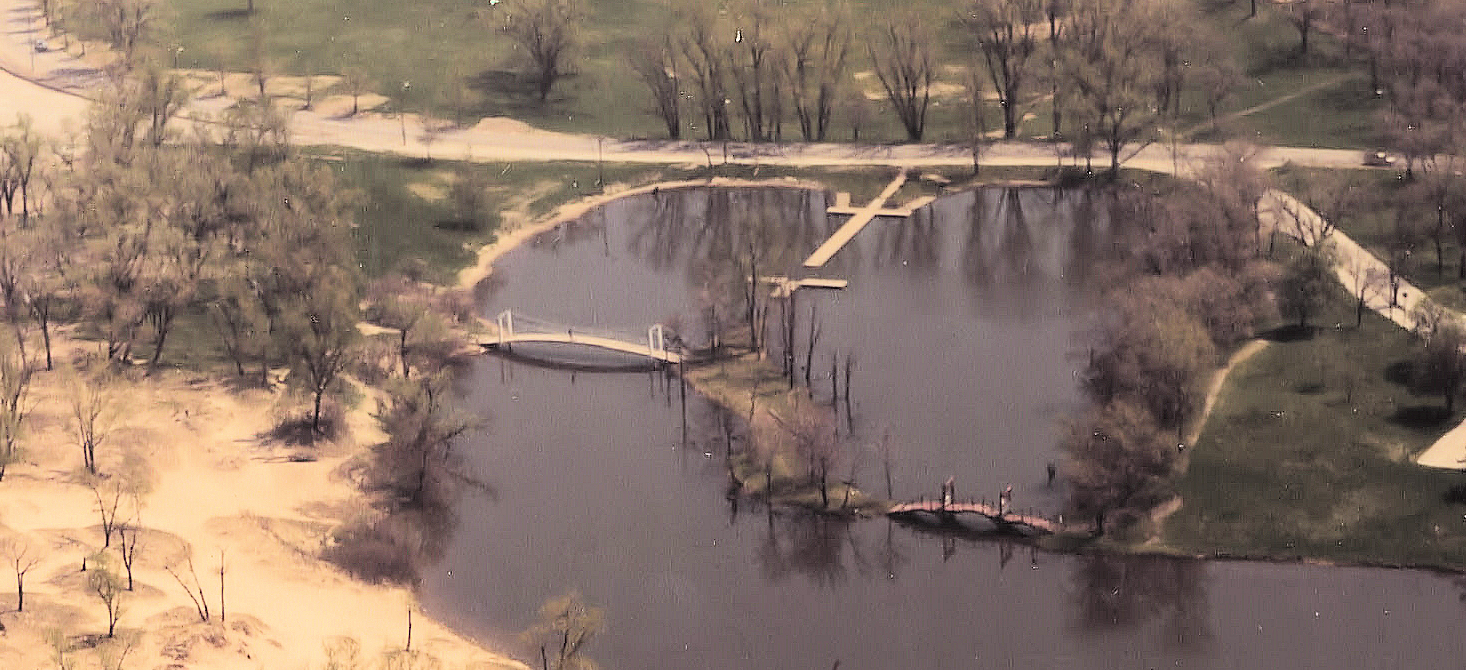
The "Double vision" photo was published in the Post-Tribune, a product of Post-Trib photographer
Elmer Budlove. Date unknown but sometime between 1965 and 1988 when the bridge collapsed.
The aerial is a crop of photos that
Oscar Boedeker took of his property at the end of Juniper.
Thanks to Mike Moore for sharing these.
The Third and current bridge.
Thanks to a $100,000 Indiana DNR grant matched by funds from a Community Development Block Grant, the collapsed “Japanese” bridge was funded for replacement in 1985. It had been blocked off as unsafe for three years and finally collapsed. A restoration project in 1982 failed for lack of funds.
Miller architect Greg Jenkins was commissioned to design the current bridge as a War Memorial Bridge
reinterpretation of a 14th Century Shinto Shrine dedicated to Veterans of all wars. Built by three old craftsmen in a warehouse near Midway Airport with materials supplied by
Randy Carr of Carr Lumber in Chicago the bridge now, in 2020, is sadly in need of some love and repair. (Footnote:
Email, Greg Jenkins, AIA, March 3, 2020.
)
The Suspension Bridge and Fishing Causeway
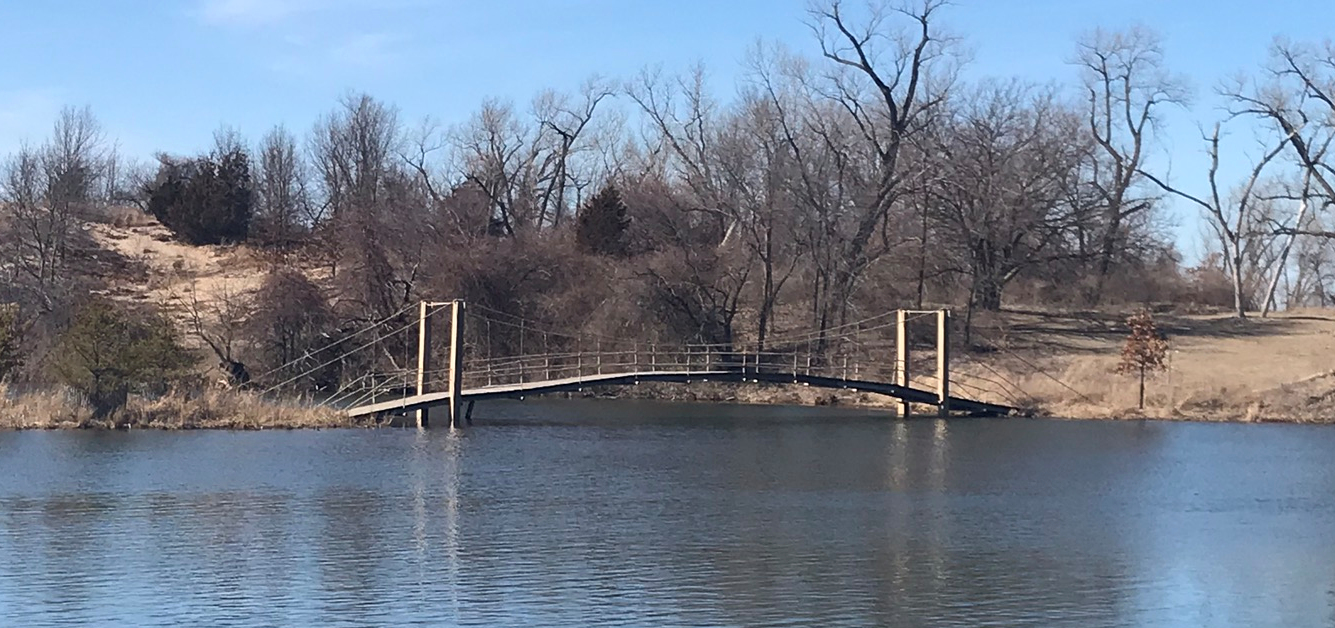
In June of 1966 the Marines built the suspension bridge as a training exercise. A little over one hundred feet long it connects the north side of the island to the mainland. Very little else is known about this bridge’s origin other than what is in the caption of the picture on the left from the Valparaiso’s Vidette-Messenger.
As the pre-1932 photo on the right shows, there was some sort of a bridge at this location before the suspension bridge was built. Baseball was played in the park by the Miller Eagles, members of the Lake County Baseball Association.
A concrete causeway/bridge was placed in the lagoon by Elias Construction of Gary. Never really successful, it tended to sink and/or be covered with water and was finally removed in the 2011-2013 rehabilitation of Marquette Park.
George Kuny -
The Island's landscape architect
& His Chrysanthemums
Today's island is planted with native grasses, plants, and flowers. It is not known what the original plantings by George Kuny were, but Kuny had a penchant for chrysanthemums and held a flower show for over 20 years, first at the Pavilion, and then in the greenhouses in Gleason Park where he played at his hobby which was his job. The photo and caption on the left is from the Gary Post-Tribune of November 9, 1936. It, like the one on the right from the 1939 paper, were captured from microfilm and were cleaned up as best I could.
Kuny Elementary school at 5050 Vermont in Gary was built within a few years of his death in 1957, closing in 2009. A graduate of the University of Illinois, he came to Gary after working on the Henry Ford estate in Dearborn, Michigan for seven years. Hired under the administration of Mayor Floyd William, he directed the landscaping of Gateway Park, Marquette Park, and a number of other parks in the City. His helpmate, Geraldine, who he married in 1947, was also employed by the Park Department drawing designs but taught Art at various Gary schools for over 40 years.
Memorials for both of them are at Find-a-Grave which has their published obituaries. Click on their picture to go to the memorial in a new tab or window.
1939 Mum Show
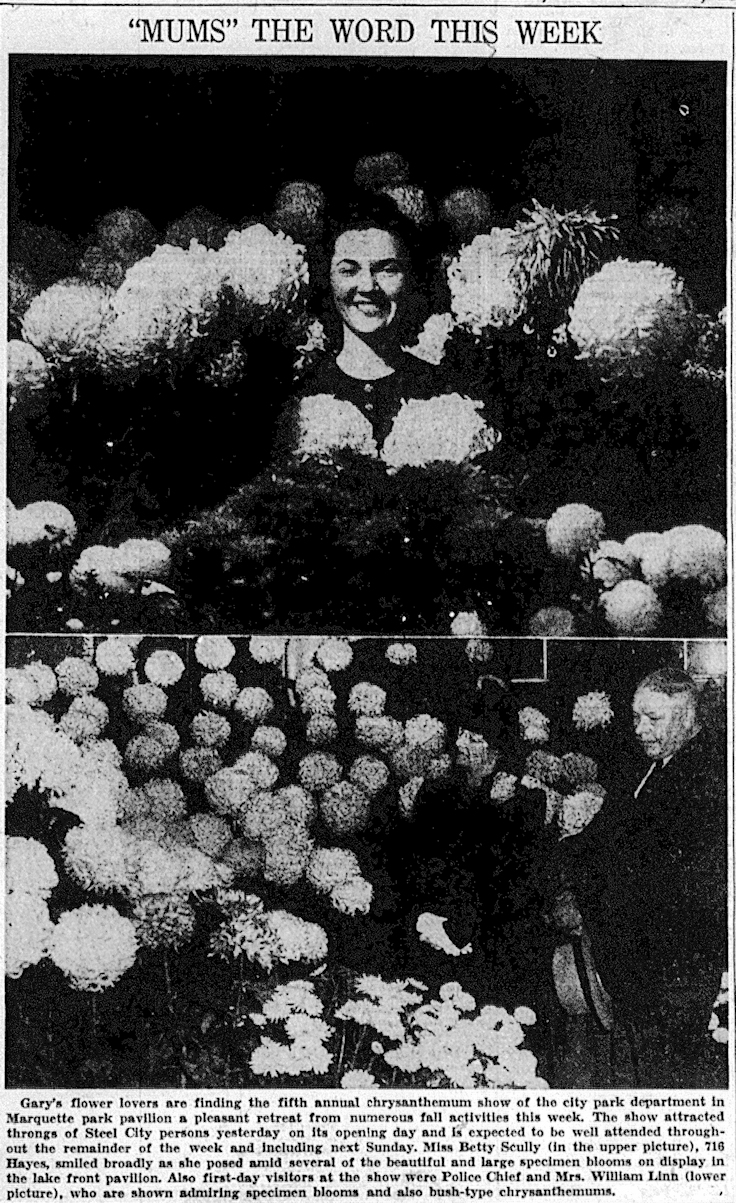
More on Geraldine (née Markwalder) Kuny: A graduate of the Fort Wayne Art Institute, awarded scholarships to Harvard University and the Chicago School of Floral Design, Geraldine was an accomplished artist in her own right. A former colleague, remembering her in 2020 wrote, “In the classroom she was fair, FIRM, and consistent. In the elementary school (I knew her when we both taught at Melton School) she taught art concepts which were then used in the amazing art works her students produced. The most amazing projects were the mosaics the 6th graders created.” As the obituary notes, she was also a puppeteer. Together with a close friend they formed the “Yankee Doodle Puppeteers” who performed at nursing homes throughout Lake County.
Additionally:
1) Some of the information on this page is from the memories of folks who grew up in Miller. Not surprisingly, there seems to be little to be gleaned from the newspapers about Patterson Island and its bridges. If you have any memories, or additional information to share, please contact me at steve@spicerweb.org
2)The field reports from WPA projects are on nearly eleven thousand rolls of microfilm at the National Archives, 246 rolls for the State of Indiana alone. On a long shot, I requested information on how to acquire those reports. After several email exchanges with a very helpful archivist at the National Archives it was sadly determined that the reports were likely among the 60-80% of files improperly disposed of after World War II. Many thanks to Gene Morris at NARA for his diligence in trying to find the records.
3) Thanks to Greg Jenkins, George Rogge, Steve McShane at the Calumet Archives, and Gene Ayers for their contributions to this page.
4) Thanks to George Rogge for the picture of the "Stonehill Bridge." The photo is on a 4x6 postcard which is titled on the back "View of Bridge at Marquette Park" with "Photo by Vic Napinski" with no date.
5) Thanks to Bud Jacknow for his pictures for the Squeeze Inn and the information that they provided for this page as well.
Endnotes:
Page created March, 2020; updated March, 2022.
© Text copyright: Steve Spicer
Feel free contact me about this page.

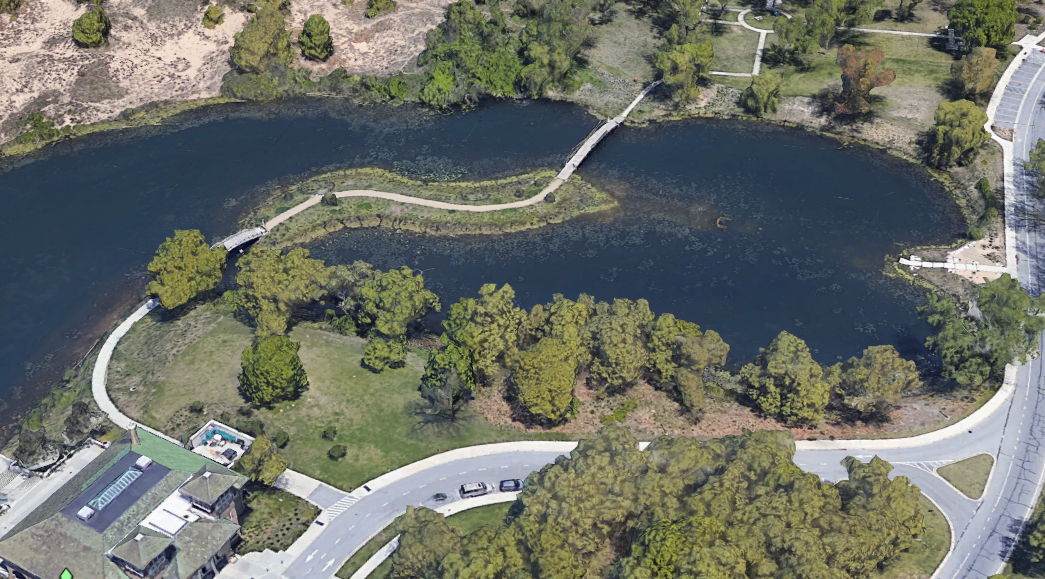
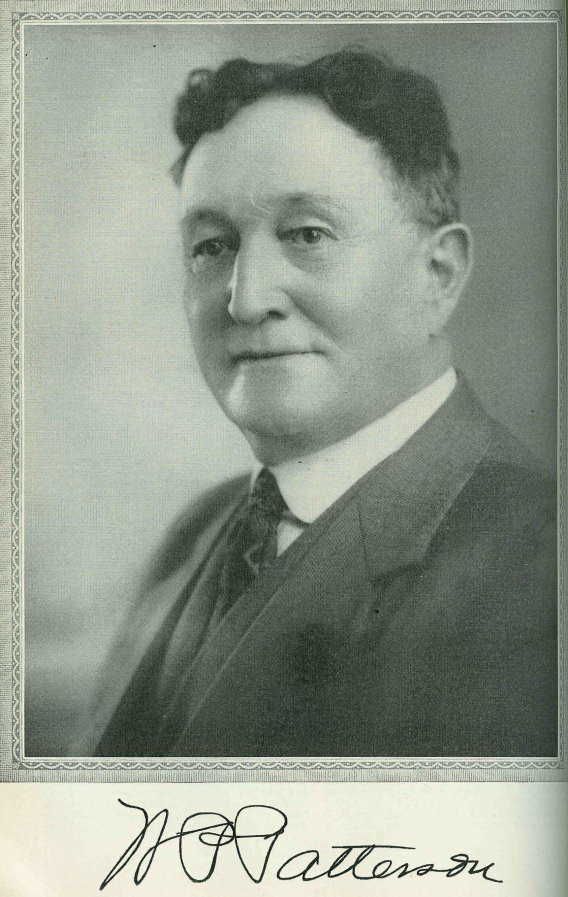

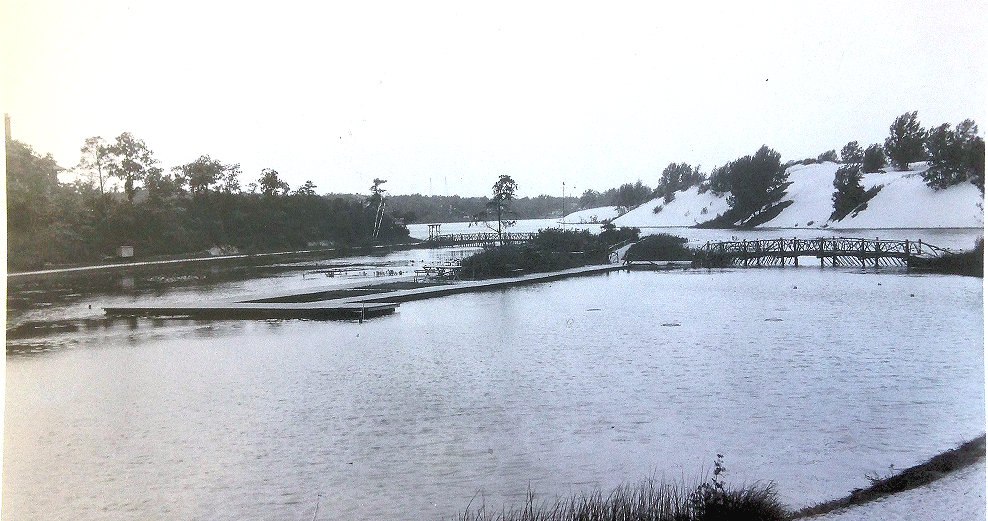
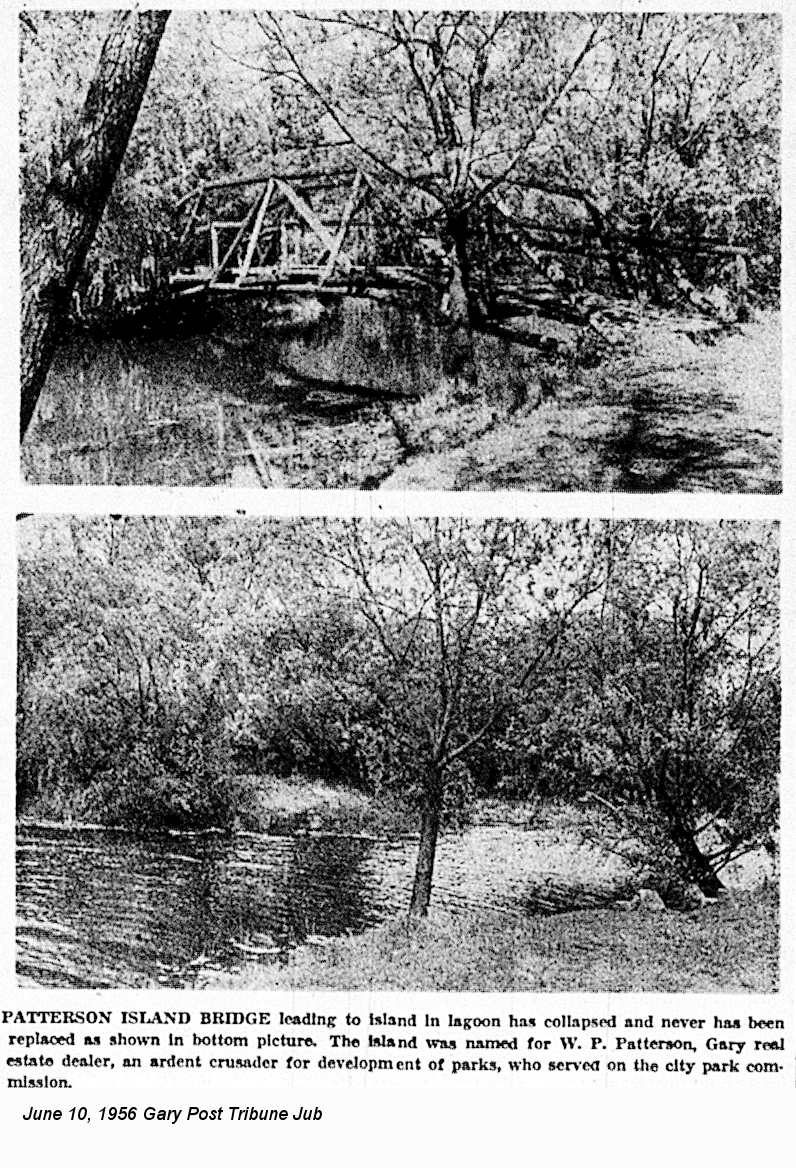
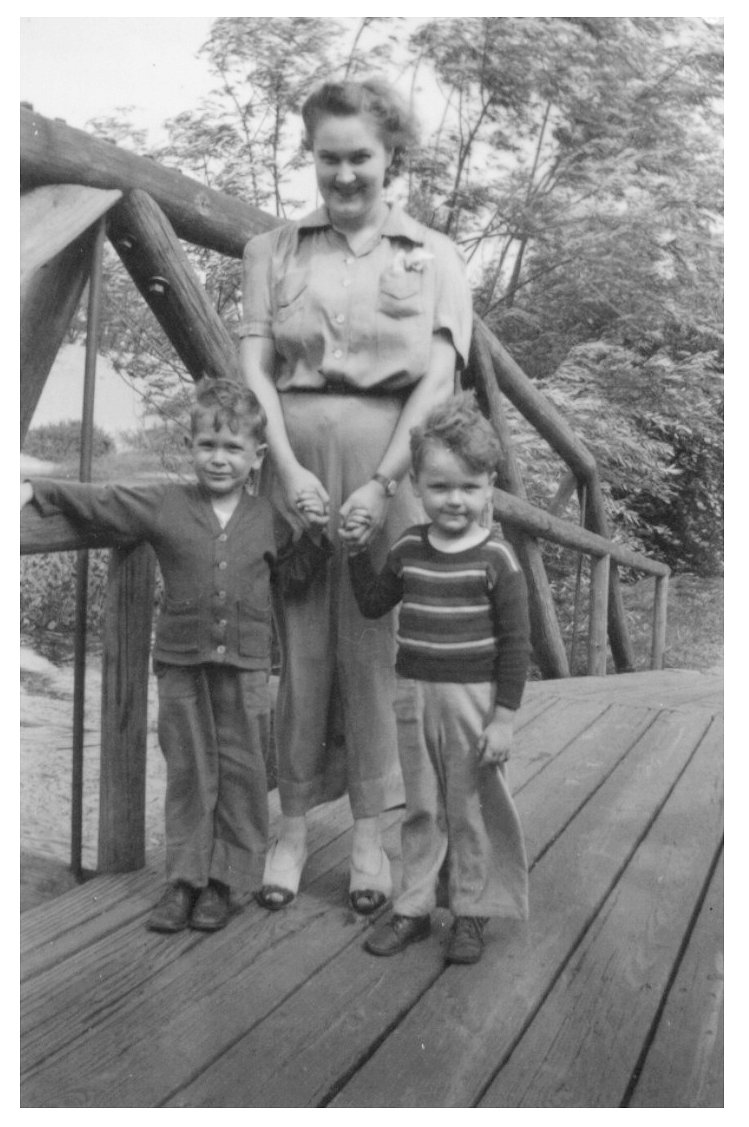

.jpg)
